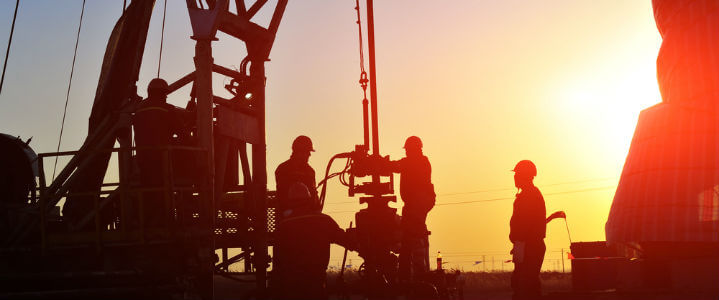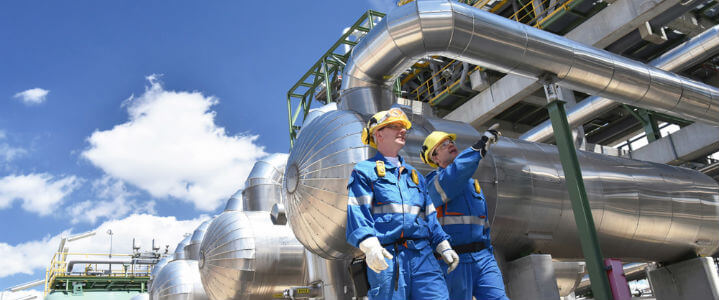Working in the oil and gas extraction industry comes with risks every year. Such workers experience injuries and fatalities on the job, and they’re at the greatest risk in the U.S. annually. Oil and gas safety standards are certainly important.
Employers and employees should be mindful and intentional about safety issues in oil and gas industry. We understand the constant pressure that comes with production and efficiency. We understand that drilling projects are expensive, time-sensitive, and physically demanding. All of this can take its toll on health and safety in the oil and gas industry today.
The Importance of Safety in the Oil and Gas Industry
It’s impossible to ignore the importance of safety in the oil and gas industry. Accidents and injuries are an almost constant threat to workers in the field. One of the best ways to mitigate potential risks is with safety training.
Whether you have questions about oil and gas safety standards or want to make sure you are covering the right topics, contact us today and learn how we can help.
8 Oil & Gas Safety Standards & Tips
Let’s talk about some oil and gas safety topics and major concerns you’ll want to address with your workers. In fact, let’s jump into some helpful safety tips in the oil and gas industry right now.
1. Talk with your local emergency response team in the community.
Do this sooner rather than later. Initiate the conversation. Cooperate with emergency responders in your area. Present scenarios, and plan what’s best. Learn how to make an emergency action plan.
2. Invest in a safety training program that educates & unites workers.
Open, honest communication and respect among workers and supervisors represents the ideal. Reach out to safety companies in Texas like Safety by Design. We train, support, and help you build trust in your facility.
3. Keep in touch with workers and their mental health.
“Worker culture” is a real thing. Your employees may put up a tough front, but keep an eye and ear out for exhaustion, stress, and much more. These mental states can lead to injuries and worse. With clear minds, we can have clearer project and safety vision.
4. Be sure workers understand their roles and hazards.

A worksite is a busy place. New workers should understand their new roles. But even your veterans should be careful with changes and shift handovers. Require your employees to know the safety rules in the oil and gas industry. Review the OSHA oil and gas safety standards regularly.
5. Remind everyone in the workplace that housekeeping is important.
Oil industry safety topics aren’t fully discussed until you mention this. It gets overlooked, but picking up after oneself is vital. Keep all work areas, floors, and pathways clear of trash, equipment, spills, etc.
6. Workers should be informed and warned with signs. Communicate clearly. Keep everything updated.
Effective signs, labels, and color-coding can save lives. Efficiency is also improved. Workers can locate tools, equipment, and workspaces quickly when they’re directed. Point out dangers and safety instructions when possible. Replace outdated or faded information. Always reassess your signs when projects shift. What made sense for one site might not apply to another.
7. Monitor employee driving behavior.
Safety precautions in oil and gas industry also depend on this huge factor. Driving and even riding in a vehicle accounts for the most fatalities in this field. Report issues, analyze drivers, and heavily monitor and correct concerning behavior and habits.
8. Machine maintenance is key.
This is paramount in OSHA standards for oil and gas industry. It plays an important role in keeping workers safe and keeping machines from failing. Offshore rigs can be hundreds of miles from land. Regular maintenance checks should be part of your company’s oil and gas process safety management.
Safety in oil and gas industry is serious business. Use the Safety by Design safety training in Houston for a program that speaks to every need here. And so much more! We have years of experience and expertise that will benefit you and your team.
The Importance of Discussing Oilfield Safety Topics with Your Employees
It’s not uncommon for oil and workers employees to work independently in the field. They rely on their common sense to minimize their risks of workplace injuries. While using good judgment can reduce the number of ergonomic-related accidents, it’s not enough to prevent all injuries. Your employees need more information to keep them safe.
Oilfield safety training is the best way to ensure your employees have the information and skills they need to prevent injuries.

Discuss Downstream O&G Safety Topics for Refinery Workers
Another part of oil industry safety is knowing the oil refinery hazards. Research and make your team knowledgeable about refinery safety tips. Workers are susceptible to motor vehicle accidents, contact injuries, slips, trips, and falls. They may also encounter fires, explosions, chemical exposure, and confined space issues. Review oil refinery safety topics often.
Discuss Oilfield Safety Topics for Upstream O&G
And we can’t leave without mentioning the discussion of oil rig hazards. The dangers of oil drilling for workers include things like cave-ins and lone-wolf shift accidents in remote locations.
Oilfield Safety Meeting Topics
To meet oil and gas safety standards, your employees must be able to recognize potential hazards. The best way to get the information out is in an oilfield safety meeting. Here are some of the topics you want to cover to ensure everyone’s safety in the field.
- Avoid taking unnecessary risks. Whether your employees are working alone or in a group, everyone should avoid taking unnecessary chances. Employees should evaluate the potential risks and benefits before taking any action.
- Safety is always essential in the oil and gas industry. Safety is usually the top priority in a dangerous situation but can take a back seat during routine tasks. Employees always need to remember safety procedures regardless of how mundane or risky their tasks.
- Understand the warning notices and markers. All employees in the field and at the office must be familiar with the various industry markers, warnings, and notices. Even colored signs and flags can act as markers or warnings.
- Always wear the right protective gear. Your employees must know which gear to wear for all tasks.
Ergonomics in the Oil and Gas Industry
Ergonomics in the oil and gas industry can present injury risks to employees. These potential hazards include,
- Lifting heavy items
- Bending over repeatedly
- Reaching for overhead loads
- Pushing and pulling heavy items
- Working in awkward body postures
Performing repetitive movements can also expose employees to ergonomic-related injuries that can include muscle sprains and strains. Injuries relating to musculoskeletal disorders can also occur in the oil and gas industry.
Get the Help You and Yours Deserve
Know you need to make a change? Want to avoid costly penalties? Want peace of mind while workers carry out their important roles in your company? You’re at the right place.
Contact Safety by Design today if you’re seeking education, training, and support in your facility. We’ll help you with refinery safety topics as well as drilling rig safety topics. We’ll get you organized and systematic about records and employee safety. We know OSHA standards through and through. With our knowledge and expertise, you’ll be well on your way to a safer tomorrow for you and your crew.



